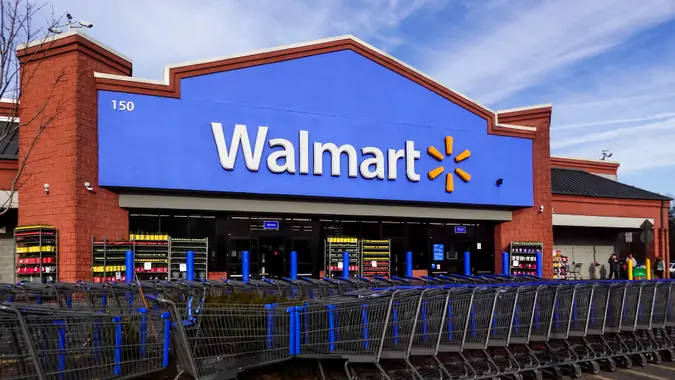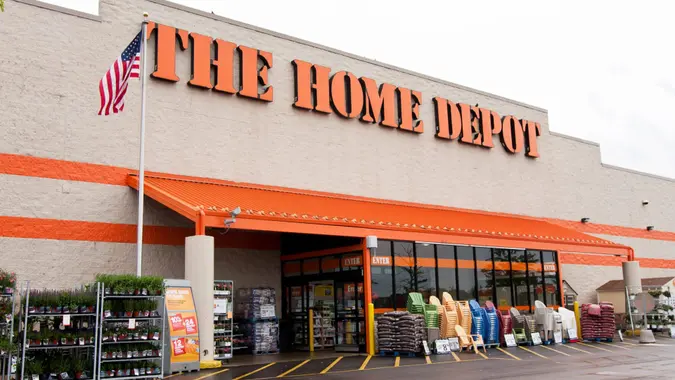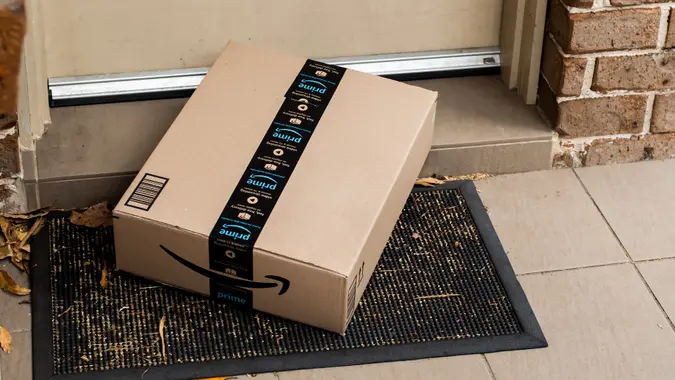Prices Have Skyrocketed: 7 Stores Where You Can Still Find Pre-2020 Deals

Commitment to Our Readers
GOBankingRates' editorial team is committed to bringing you unbiased reviews and information. We use data-driven methodologies to evaluate financial products and services - our reviews and ratings are not influenced by advertisers. You can read more about our editorial guidelines and our products and services review methodology.

20 Years
Helping You Live Richer

Reviewed
by Experts

Trusted by
Millions of Readers
Inflation affects the cost of everyday goods and services. The annual rate of inflation for the 12 months ending in February 2024 was 3.2%, slightly higher than the previous year’s rate.
But what does this look like in practice?
From 2020 to 2024, the cumulative rate of inflation was 19.9%. This means that if you bought something for a dollar in 2020, that same item would cost $1.20 now. Something that cost $100 would cost $120 now, and so forth.
While the cost of basic goods continues to rise, there are certain stores where you can still find pre-2020 deals — or at least costs that are lower than the average. Here are some of the main ones.
Costco
Costco is one store where the cost of everyday goods is more or less on par with what it was before the pandemic.
“Certain warehouse clubs, like Costco, have managed to maintain lower price points on bulk items by leveraging their membership model, effectively keeping prices closer to pre-2020 levels for essentials like grains and frozen goods,” said Timothy Williams, an expert in marketing and brand strategy at Thinksia, a company that analyzes price trends using real-time analytics.
Other items at Costco have also maintained their pre-2020 price point. Case in point, the hot dog and soda combo still costs $1.50 — and has for many years. The popular rotisserie chicken is also just $5 still.
Dollar Stores
“It’s no secret that almost everything is more expensive than it used to be. However, there are a few stores that have held firm to the prices they had before the pandemic,” said Scott Lieberman, founder of Touchdown Money.
Some places, like Dollar Tree, have increased their prices to more or less match inflation. In 2021, the store raised its base price from $1 to $1.25.
That being said, other dollar stores have kept their prices consistently low. Stores like Family Dollar even have “Price Drop” discounts that keep costs even lower.
“Dollar stores, though not immune to inflation, still offer a variety of products at a price point more reminiscent of previous years,” Williams said. This is particularly true of cleaning supplies and generic-brand items.
Walmart
While costs have risen at Walmart over the past few years, you can still generally find cheaper goods there than at many other retailers.
Last year, the AARP did a study comparing Walmart, Aldi and Stop & Shop to see which one was the cheapest when it came to basic groceries. Using a shopping list of 30 grocery items, Walmart came out on top with a total bill of $88.37 — compared to Aldi’s $90.91 and Shop & Stop’s $114.49.
This study didn’t include things like promotions or discounts, though. When you take those into account, you’re more likely to find better deals at these types of stores.
Aldi and Lidl
Aldi and Lidl are both known for their low prices on everyday goods.
“Discount stores like Aldi and Lidl remain great ways to save on groceries,” Lieberman said. “You’ll find plenty of bargains here.”
The popular YouTube channel Marriage & Motherhood also did a price comparison of Aldi from 2020 to 2024. While the prices of most items have risen significantly over the past few years, you can still get certain items — like raw beef — for less than you did in 2020.
T.J. Maxx and Marshalls
“It’s a challenge to find prices equivalent to pre-2020 levels due to inflation, but there are still some good options out there if you’re willing to do some digging,” said Nguyen Huy, a consumer trend analyst and the founder of Trendy Aloha.
That being said, Huy said Marshalls and T.J. Maxx are two discount retailers where prices have remained relatively low over the past several years. A big reason for this is that these stores get overstock and closeouts from other retailers, leading to some significant cost-savings potential.
Trader Joe’s
Groceries have become expensive everywhere, but you can still find a few good deals on foods at Trader Joe’s. According to this unofficial price tracker, things like green onions, organic garlic naan crackers, strawberries, chicken thighs and roses have actually dropped in price this year.
That’s not to say that prices are consistent across all Trader Joe’s locations. As well, certain basic goods continue to rise beyond their pre-2020 levels. But if you’re able to combine your shopping trip with coupons and other deals, you might be able to score some low prices on certain items — like meat, produce, dairy and frozen goods.
Thrift Stores
While not a specific store, some thrift shops and used goods markets also boast pre-2020 prices — or at least lower-cost goods than what you’d find elsewhere today.
“You can find nicely worn clothing, home goods and sometimes even electronics or appliances at a fraction of the original price,” Huy said. “Just be sure to carefully inspect anything that could have issues like electronics before purchasing.”
Goods With the Greatest Price Increases
Overall, the cost of most basic goods — if not all — has skyrocketed over the past four to five years. Even discount stores aren’t immune to this change, though you might still be able to find decent prices on certain everyday items at places like Walmart, Costco and Lidl.
Over the past several years, certain things have gone up more due to inflation, increased production costs and supply chain disruptions. According to Williams, groceries and gasoline have seen the most significant price increases.
“Some categories that have seen especially sharp price hikes include things like meat and other proteins, dairy, produce and construction materials like lumber,” Huy said. “Used cars have also jumped up substantially due to supply constraints meeting high demand.”
If you’re trying to keep costs low, here’s what Huy said:
“When shopping, be strategic — compare prices in different areas, consider generic or store brand options and make a meal plan before shopping to avoid impulse purchases. Keep an eye out for sales too.”
While you’re at it, look into used or consignment shops where prices are generally lower from the get-go.
 Written by
Written by  Edited by
Edited by 
























